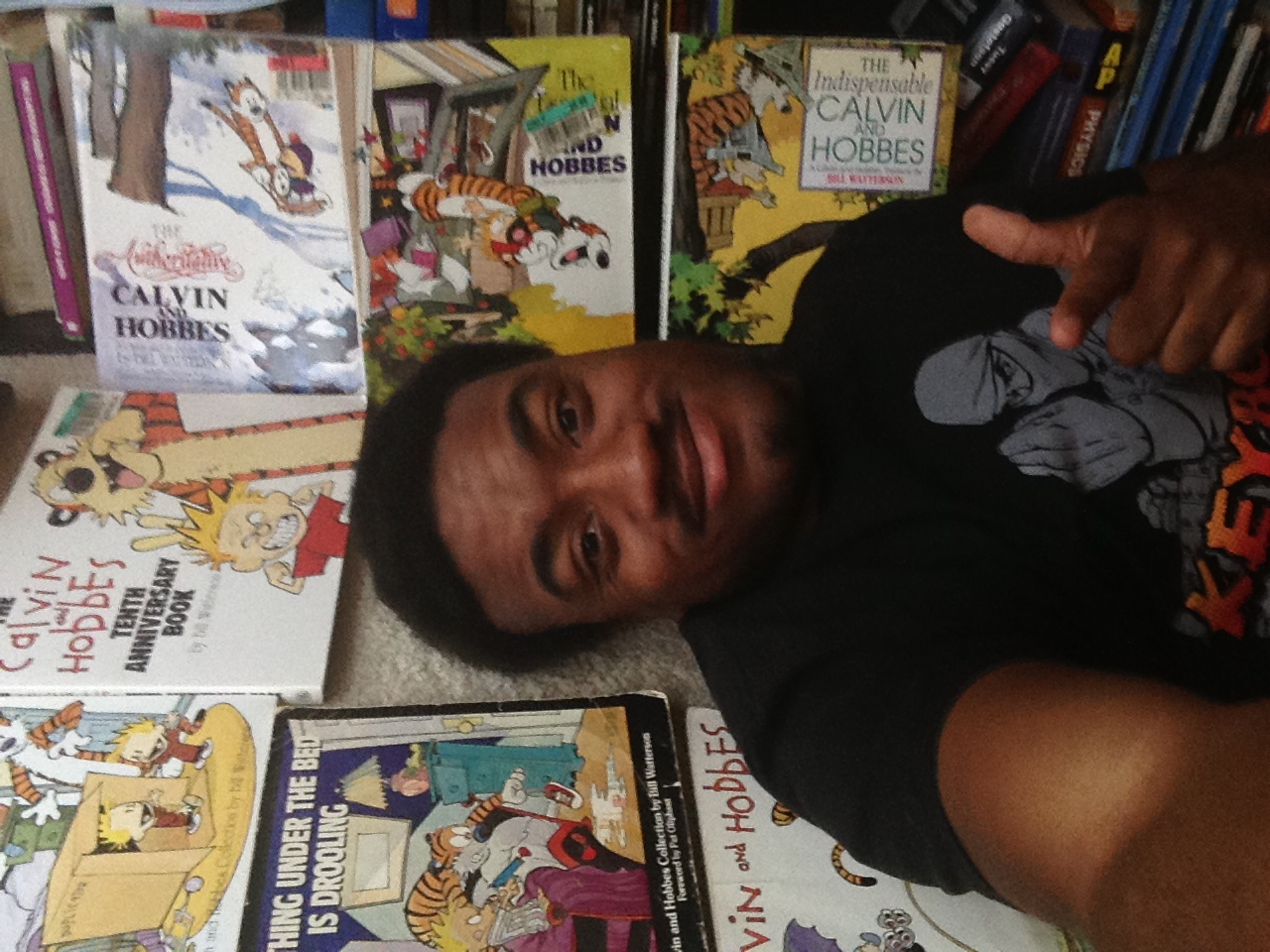These are a few of my favorite things
When reading the paper as a kid, one of the first things that I did was skip to the comic section to read the Calvin and Hobbes comic by Bill Watterson. It's my favorite comic of all time, and it often provides hilarious geeky interpretations of science, math, and other things that are covered on this blog. Luckily the Daily Calvin and Hobbes Facebook page has been giving me life for a while now. It's been a great online version of the various compilation books that you see in the pic above, which I acquired from the clearance racks of Borders (RIP) and Barnes & Nobles over several years.
Check out the below comic where Calvin daydreams during math .. haven't we all done this?
Here's another comic featuring one of my favorite Calvin alter egos, Spaceman Spiff. He travels through space and ... battles things.
Here's Calvin thinking about how far computers may go in terms of artificial intelligence. Remember, this comic was made way before high end computers and the spread of the internet.
Finally, here's Calvin going through the struggle that us science geeks face when trying to explain our passions to others.



